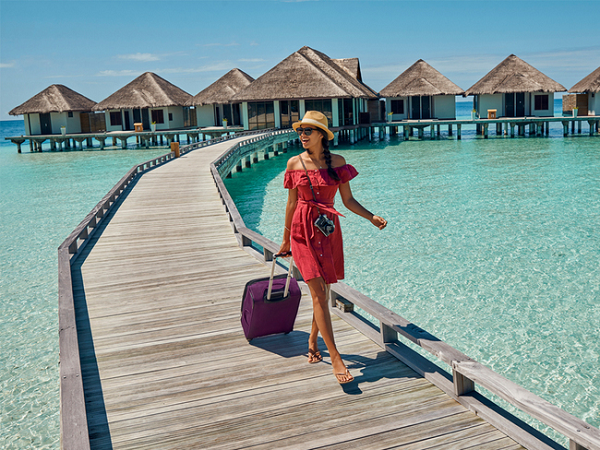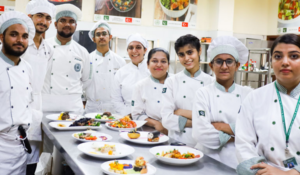Travel and Tourism- There are various types of travel and tourism, each catering to different interests, preferences, and purposes. Here are some of the main types:
- Leisure Tourism: This is the most common form of tourism, where people travel for relaxation, enjoyment, and recreation. It includes activities like sightseeing, beach vacations, cultural experiences, and more.
- Adventure Tourism: Adventure tourism involves activities that are physically challenging and often require a certain level of skill or risk. Examples include hiking, rock climbing, bungee jumping, and water sports like surfing and kayaking.
- Cultural Tourism: Cultural tourism focuses on exploring the history, traditions, and local customs of a destination. Travelers engage with local communities, attend cultural events, visit museums, and immerse themselves in the local way of life.
- Ecotourism: Ecotourism promotes responsible travel to natural areas that conserves the environment and improves the well-being of local communities. It aims to educate travelers about conservation and sustainable practices.
- Medical Tourism: Medical tourism involves traveling to other countries to receive medical treatment or procedures. This can be for cost savings, access to specialized treatments, or combining medical care with a vacation.
- Business Tourism: Also known as MICE (Meetings, Incentives, Conferences, and Exhibitions/Events), this type of tourism involves attending business-related events, conferences, seminars, and trade shows.
- Religious Tourism: Religious tourism involves traveling to sacred or religious sites for pilgrimage, worship, or spiritual experiences. Examples include the Hajj pilgrimage to Mecca and visits to the Vatican City.
- Cruise Tourism: This type of tourism involves traveling on cruise ships to various destinations. Cruises offer a combination of travel, entertainment, and relaxation.
- Wellness Tourism: Wellness tourism focuses on enhancing physical, mental, and spiritual well-being. Travelers seek activities like spa treatments, yoga retreats, and meditation in serene locations.
- Educational Tourism: Educational tourism combines travel with learning experiences. It could involve language courses, workshops, cultural exchange programs, or visits to educational institutions.
- Sports Tourism: Sports enthusiasts travel to attend or participate in sports events, competitions, and tournaments. This can include events like the Olympics, World Cup, or major marathons.
- Volunteer Tourism (Voluntourism): Voluntourism involves combining travel with volunteering efforts. Travelers contribute to local communities or conservation projects while experiencing a new culture.
- Rural Tourism: Rural tourism focuses on promoting rural areas and providing visitors with authentic countryside experiences. This can include farm stays, agri-tourism, and exploring local crafts.
- Gastronomic Tourism: Gastronomic tourism revolves around food and beverage experiences. Travelers seek out local cuisine, food festivals, cooking classes, and wine tours.
These are just a few examples of the many types of travel and tourism that exist. People’s preferences and motivations for travel can be diverse, and the industry continues to evolve to meet these varying demands.
What is Travel and Tourism
Travel and tourism refer to the activities of people traveling to and staying in places outside their usual environment for leisure, business, or other purposes. It encompasses a wide range of experiences and industries related to travel, hospitality, and the exploration of new destinations. Here’s a breakdown of the key components:
Travel: Travel involves the movement of individuals from one location to another. It can be local, national, or international and can occur for various reasons, such as leisure, work, education, or health-related purposes. Travel can encompass modes of transportation like air travel, road trips, train journeys, and cruises.
Tourism: Tourism encompasses the broader industry that revolves around providing services and experiences for travelers. It includes various sectors, such as accommodations (hotels, resorts, lodges), transportation (airlines, cruise lines, car rentals), attractions (museums, theme parks, landmarks), and activities (sightseeing, adventure sports, cultural experiences).
Tourism can also have significant economic, social, and cultural impacts on destinations. It can contribute to a region’s economy through spending on accommodations, dining, shopping, and entertainment. Additionally, tourism can foster cultural exchange, promote understanding between different communities, and raise awareness about environmental conservation and sustainable practices.
Overall, travel and tourism play a crucial role in connecting people, cultures, and places, while also supporting economies and creating opportunities for personal enrichment and exploration.
When is Travel and Tourism

Travel and tourism occur year-round, as people engage in these activities throughout the year. The timing of travel and tourism can be influenced by various factors, including seasons, holidays, special events, and personal preferences. Here are some considerations:
- Seasons: Many travelers choose to travel during specific seasons. For example, summer is a popular time for beach vacations and outdoor activities, while winter can be ideal for ski trips and winter sports. The choice of destination may also be influenced by the climate and weather conditions during different times of the year.
- Holidays and Festivals: Travel often spikes during holidays and festivals. People travel to be with family and friends during occasions like Christmas, New Year’s, Thanksgiving, and other cultural or religious celebrations. Festivals and events also attract tourists to various destinations.
- School Breaks: Families with school-aged children tend to travel during school breaks, such as summer vacation, spring break, and winter holidays. This allows parents and children to take trips together without disrupting the school schedule.
- Special Events: Special events like conferences, trade shows, sports tournaments, and music festivals can lead to increased travel to specific destinations. Attendees and participants travel to these events, boosting tourism in the host cities.
- Off-Peak Travel: Some travelers prefer to avoid crowds and high prices by traveling during off-peak seasons. This can vary by destination, but it often involves traveling outside of major holidays and school breaks.
- Personal Preferences: Ultimately, the timing of travel and tourism depends on individual preferences. Some people might enjoy traveling during less crowded times, while others might specifically seek out the energy and excitement of peak tourist seasons.
- Business Travel: Business travel can happen year-round as well, as meetings, conferences, and work-related events occur throughout the year. Business travelers might have a different travel schedule compared to leisure travelers.
It’s important to note that travel patterns can differ based on the region, culture, and local factors. Additionally, global events, health considerations (like pandemics), and geopolitical situations can also influence when and how people travel.
Application of Travel and Tourism
The application of travel and tourism is widespread and impacts various aspects of society, the economy, and personal experiences. Here are some key applications of travel and tourism:
- Economic Impact: Travel and tourism contribute significantly to economies around the world. They generate revenue through accommodations, transportation, dining, attractions, and related services. Many regions heavily depend on tourism as a major source of income and job creation.
- Employment: The travel and tourism industry is a major employer, offering job opportunities in various sectors such as hospitality, transportation, entertainment, and more. This includes jobs ranging from hotel staff to tour guides, travel agents, and event planners.
- Cultural Exchange: Tourism facilitates cultural exchange between people from different backgrounds. Travelers experience local traditions, languages, customs, and cuisines, contributing to greater cross-cultural understanding and tolerance.
- Preservation of Heritage Sites: Tourism can help preserve historical and cultural heritage sites by generating funds for their maintenance and restoration. These sites attract tourists interested in learning about the history and significance of different locations.
- Infrastructure Development: The demand from tourism often leads to improved infrastructure, including airports, roads, public transportation, and utilities, which can benefit both tourists and local residents.
- Community Development: Tourism can contribute to the development of local communities by creating opportunities for entrepreneurship, small businesses, and community-based tourism initiatives.
- Environmental Awareness and Conservation: Eco-tourism promotes environmental awareness and conservation efforts by encouraging responsible travel practices and supporting conservation projects.
- Educational Opportunities: Educational tourism provides opportunities for travelers to learn about new cultures, languages, and histories firsthand. Language immersion programs, cultural workshops, and visits to educational institutions are examples.
- Health and Wellness: Wellness tourism focuses on rejuvenation, stress relief, and personal growth. Travelers seek spa treatments, yoga retreats, and health-focused experiences.
- Research and Education: Researchers and educators in fields like anthropology, geography, and environmental science often engage in travel to study ecosystems, cultures, and social dynamics.
- Diplomacy and Networking: International conferences, summits, and trade shows provide opportunities for diplomats, business leaders, and professionals to meet and collaborate.
- Personal Enrichment: Travel and tourism offer individuals the chance to explore new places, create lasting memories, and broaden their horizons through exposure to different cultures and experiences.
- Crisis Recovery: After natural disasters or crises, tourism can play a role in helping communities recover by attracting visitors and stimulating economic activity.
- Promotion of Local Art and Craftsmanship: Tourism often showcases local art, crafts, and traditional products, which can support local artisans and help preserve traditional skills.
Overall, travel and tourism have multifaceted applications that extend beyond leisure activities. They impact economies, societies, cultures, and personal growth in various positive ways.
Case Study on Travel and Tourism
Barcelona, Spain
Background: Barcelona is a popular tourist destination located in Catalonia, Spain. It is known for its rich history, stunning architecture, vibrant culture, and Mediterranean coastline. The city attracts a diverse range of tourists, including leisure travelers, cultural enthusiasts, beachgoers, and business travelers.
Economic Impact:
- Job Creation: The travel and tourism industry is a significant employer in Barcelona. It creates jobs in hotels, restaurants, transportation, tour guiding, and various support services.
- Economic Contribution: Tourism contributes a substantial portion of Barcelona’s GDP. The revenue generated from accommodations, dining, shopping, and attractions positively impacts the local economy.
- Small Businesses: Many small businesses thrive due to tourism, including local markets, souvenir shops, and boutique stores.
- Infrastructure Development: The demand for tourism has led to improvements in transportation, including the expansion of the Barcelona-El Prat Airport, the metro system, and other public transport options.
Cultural Exchange and Preservation:
- Historical Sites: Tourism supports the preservation and maintenance of historical sites such as the Sagrada Família, Park Güell, and the Gothic Quarter. Funds generated from entrance fees and donations contribute to restoration efforts.
- Local Culture: Visitors engage with local culture by attending events, festivals, and experiencing Catalan traditions. This interaction promotes cross-cultural understanding.
Challenges:
- Overtourism: Barcelona has faced challenges related to overtourism, where the high volume of visitors at certain times of the year can strain local infrastructure and impact residents’ quality of life.
- Environmental Concerns: Increased tourism can lead to environmental pressures, including waste generation and carbon emissions from transportation.
- Cultural Preservation: Balancing the preservation of cultural heritage with the demands of mass tourism can be complex. Ensuring that the influx of tourists doesn’t degrade the authenticity of the destination is a concern.
Sustainability Initiatives:
- Sustainable Tourism Practices: Barcelona has implemented various sustainable tourism practices to minimize its environmental impact. This includes promoting public transportation, encouraging waste reduction, and supporting eco-friendly accommodations.
- Local Engagement: The city encourages responsible tourism by educating tourists about cultural norms, environmental protection, and respecting local communities.
- Regulation: The city has introduced measures to manage overtourism, such as limiting the number of cruise ships docking in the port and restricting licenses for new hotels in certain areas.
Conclusion: The case of Barcelona illustrates how travel and tourism can have a profound impact on a destination’s economy, culture, and infrastructure. While tourism brings economic benefits and cultural exchange, it also presents challenges related to sustainability and managing visitor numbers. By implementing sustainable practices and balancing the needs of tourists and local residents, destinations like Barcelona can strive to create a positive and mutually beneficial tourism experience.
White paper on Travel and Tourism
Title: White Paper on Travel and Tourism: Navigating Trends and Challenges
1. Executive Summary: Provide a concise overview of the key points discussed in the white paper, including the significance of travel and tourism, major trends, challenges faced by the industry, and potential solutions.
2. Introduction: Introduce the importance of the travel and tourism industry on a global scale. Discuss its economic impact, role in cultural exchange, and its potential for sustainable development.
3. Current Trends in Travel and Tourism: Explore the latest trends shaping the travel and tourism landscape, such as:
- Digital transformation and the role of technology in enhancing traveler experiences.
- Rise of experiential and sustainable travel, including ecotourism and wellness tourism.
- Impact of social media and influencer marketing on destination choices.
- Post-pandemic travel trends and the changing preferences of travelers.
4. Economic and Social Impact: Discuss the profound economic and social impacts of travel and tourism:
- Contribution to GDP and job creation.
- Implications for local economies, especially in developing countries.
- Strengthening cultural exchange and promoting global understanding.
5. Challenges Faced by the Industry: Examine the various challenges that the travel and tourism industry encounters:
- Overtourism and its consequences for local communities and infrastructure.
- Environmental concerns, including carbon emissions and waste management.
- Maintaining cultural authenticity while catering to mass tourism.
- Crisis management, as demonstrated during natural disasters or health emergencies.
6. Sustainable Tourism Practices: Highlight the importance of sustainability in travel and tourism:
- Eco-friendly accommodations and transportation options.
- Promoting responsible traveler behavior.
- Supporting local communities and preserving cultural heritage.
7. Technological Innovations: Explore how technology is reshaping the travel experience:
- Online booking platforms and mobile apps for convenient travel planning.
- Role of artificial intelligence in personalized recommendations.
- Virtual reality and augmented reality applications for destination exploration.
8. Case Studies: Present real-world examples of destinations or companies that have successfully addressed challenges or capitalized on trends in the travel and tourism industry.
9. Recommendations for the Future: Provide actionable recommendations to stakeholders in the travel and tourism sector, including governments, businesses, and travelers themselves. Address how to balance economic growth with sustainability and responsible tourism practices.
10. Conclusion: Summarize the key takeaways from the white paper and emphasize the importance of collaboration among stakeholders to ensure the continued success of the travel and tourism industry.
Remember that this is just an outline, and you can tailor the content to suit your specific goals and the depth you want to explore in your white paper on travel and tourism.






